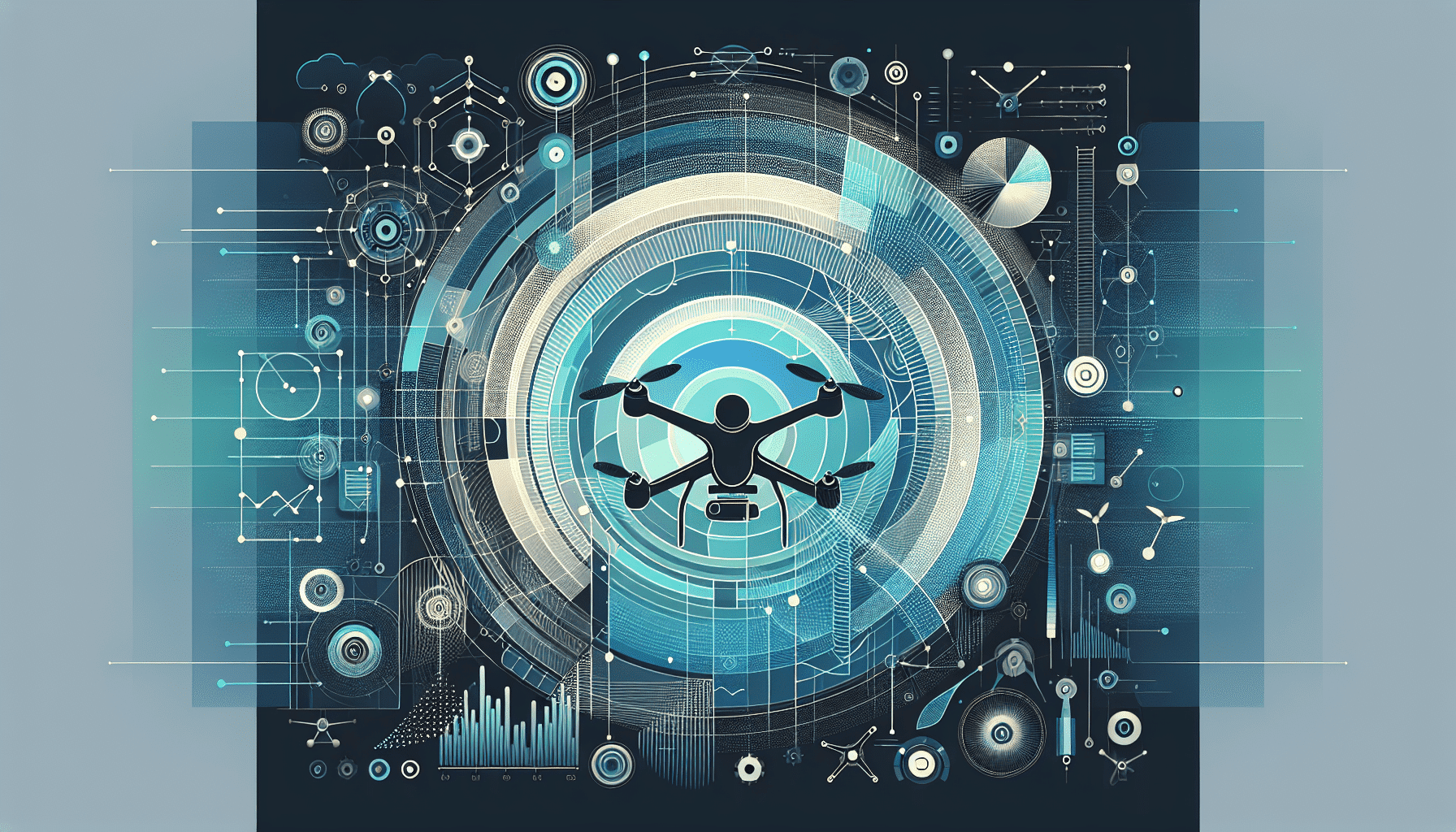Drone Data Security: Tips to Protect Aerial Footage
In This Article
- Integrate AES-256 encryption for all in-flight and stored drone data.
- Utilise FIPS-compliant secure storage devices in drones.
- Keep firmware updated across all hardware components for optimal security.
- Implement RBAC and multi-factor authentication for system access control.
- Ensure GDPR and local privacy laws are integrated into drone workflows.
- Use Counter-UAS tools to mitigate surveillance threats and secure surroundings.
- Share data responsibly using encrypted and permission-controlled platforms.
- Review real-world breaches to stay proactive rather than reactive.
Why Drone Data Security Matters
Understanding the Value of Aerial Data
Drones have revolutionised modern data collection, enabling everything from topographical mapping and agricultural monitoring to infrastructure inspections and disaster response. As this technology has evolved, so too has the volume and sensitivity of the information captured. Consequently, safeguarding this data—commonly referred to as drone data security—has become a top priority for businesses, governments, and hobbyists alike.
With drone-collected data often including high-resolution imagery, geolocation tags, and proprietary business intelligence, the ramifications of data compromise are extensive. It can lead to intellectual property theft, breaches of privacy law, military threats, and even national security concerns. With the increasing interoperability between drone systems and cloud platforms, data is frequently transmitted over networks, further heightening exposure to malicious activity. Learn more about drone data security

Common Threats to Drone-Collected Data
Unpacking Cyber and Physical Risks
Drones are vulnerable at multiple nodes—from in-flight transmission to ground-based storage. Cyber risks, such as malware, spoofing, and unauthorised network access, are among the most prevalent. Hackers can intercept unencrypted data mid-flight or exploit communication protocols to assume control of the drone or access its collected information. Spoofing GPS signals can mislead navigation, resulting in data misrepresentation or vehicle loss.
Physical threats are no less dangerous. Drone theft, especially during transport or recharging phases, can grant malicious actors direct access to storage devices. Some attackers even employ drones to sabotage or surveil other drones mid-air. In the wrong hands, aerial data can be manipulated to generate misleading analytics, potentially compromising critical operations, especially in defence and infrastructure sectors.See in-depth drone data security and privacy practices
“Drone data isn’t just about pixels—it’s intelligence in motion. Protecting it means securing digital skies.”
Encryption: Your First Line of Defense
Encryption remains the single most effective way to protect drone data end-to-end. By converting readable data into cipher text during capture, storage, and transmission, users can ensure that intercepted files are indecipherable without proper cryptographic keys. This approach applies to both onboard memory devices and live data streams sent to base stations or cloud services.
Types of Encryption for Drone Usage
There are two major forms of encryption applicable to drones: symmetric and asymmetric. Symmetric encryption, such as AES-256, is known for speed and is highly effective for real-time flight data. Asymmetric encryption, which uses public and private key pairs, is ideal for securing data stored long-term and for signed firmware updates.
To implement effective drone data security, drone operators must choose platforms offering robust encryption measures by default. Many consumer drones provide basic protection, but enterprise-grade UAVs should offer configurable encryption protocols, ideally certified by industry standards.
Choosing Secure Drone Storage Devices
Data integrity is reliant not only on software protocols but also on the physical hardware capturing and storing that information. Secure storage devices minimising vulnerabilities should be a priority in any serious drone operation. This means using encrypted SD cards, solid-state drives (SSDs) with hardware-based security functions, and tamper-evident physical enclosures.
Failing to secure storage hardware makes even the most advanced encryption effort partially futile. A compromised storage device containing unprotected keys or metadata can unravel a security architecture. When possible, secure digital modules that comply with FIPS standards (such as FIPS 140-2) should be implemented. These components discourage physical extraction or side-channel attacks.
Importance of Regular Firmware Updates
Firmware is the operational software that drives a drone’s internal components. Unfortunately, it is also a prime vector for potential intrusion if not regularly patched. Hackers exploit old firmware versions susceptible to known vulnerabilities, thereby accessing system controls or compromising stored data.
Maintaining a Secure Ecosystem
Manufacturers regularly release firmware updates to address security holes, add uncompromised communication protocols, and improve encrypted transmission integrity. A diligent drone operator must establish a strict update schedule, ideally verifying and testing firmware in a secure staging environment before wider deployment. Additionally, operators should reject third-party or unofficial firmware solutions unless they are cryptographically signed and vetted.
Regular firmware maintenance significantly reinforces drone data security at the device level, while simultaneously futureproofing hardware against emerging threats.
Access Control and Password Hygiene
Unauthorised access accounts for a significant percentage of security breaches involving drone data. Drone control systems, flight software, and cloud-synced applications must all abide by strong access control frameworks. Sadly, many users still rely on factory-default login credentials, leaving data wide open for exploitation.
Implementing Best Practices
Multi-factor authentication (MFA), role-based access control (RBAC), and password expiry policies are essential elements of access security. Passwords should be long, randomly generated through a secure password manager, and updated regularly. Crucially, operators must audit access logs to track and verify every login attempt.
By embedding strong access protocols into daily operations, organisations can defend against insider threats, credential stuffing, and brute-force attacks—all of which undermine drone data security.
Legal Guidelines for Drone Privacy Compliance
The use of drones for data collection intersects with a broad spectrum of regulations, particularly in regard to privacy and data governance. In the UK, drone operators must adhere to the Data Protection Act 2018 and the General Data Protection Regulation (GDPR). These laws require organisations to manage personal data transparently, fairly, and lawfully.
Maintaining Legal Alignment
Images or data that can identify individuals are categorised under personal data. Therefore, drone flights capturing identifiable data without proper consent or legitimate interest are vulnerable to legal action. Operators should conduct data protection impact assessments (DPIAs) to evaluate and mitigate privacy risks prior to data collection exercises.
Non-compliance isn’t just a regulatory misstep; it puts the overall credibility and ethical grounding of drone operations in question. Legal compliance is intrinsically tied to drone data security, as unsecured or illicitly-captured data is both a liability and a target for malicious use. Read a related article
Counter-UAS and Anti-Surveillance Measures
While much focus lies on safeguarding one’s drone data, operators must also remain vigilant against external threats—including other drones. Counter-Unmanned Aircraft Systems (Counter-UAS) technologies are emerging to detect, neutralise, or intercept suspicious UAVs operating nearby. These tools use RF signal detection, radar, LIDAR, and optical recognition to provide situational awareness.
Protective Countermeasures in Sensitive Environments
In scenarios involving confidential data—such as energy infrastructure surveys or government contracts—operators should employ additional surveillance countermeasures. Signal jamming devices, directional RF filters, and secure geofencing protect against drone-to-drone espionage. In some sectors, electromagnetic shielding may also be employed to obscure data transmission activity.
Implementing counter-surveillance further strengthens overall drone data security strategy by ensuring a 360-degree shield around both aerial and ground-based operations.
Real-World Examples of Drone Data Breaches
Despite widespread awareness, breaches of drone data remain alarmingly common. In 2018, research uncovered security flaws in popular DJI drones that allowed hackers to reveal pilot locations and access drone footage. Similarly, in 2020, drones used in a Middle Eastern conflict were reportedly intercepted, with adversaries gaining full access to reconnaissance data.
These cases underline the real-world consequences of inadequate drone data security. Once raw footage or telemetry data fall into the wrong hands, reputational damage, financial liability, operational shutdowns and legal repercussions can follow. Lessons from past incidents highlight why every point in a drone’s data lifecycle must be secured with rigorous planning and execution.
Balancing Data Sharing with Responsible Usage
While data sharing facilitates collaboration and innovation, especially in environmental research or smart city development, it must be balanced with conscientious stewardship. Drone operators should establish clear permissions around who accesses what data, under what conditions, and with what levels of redaction or anonymisation.
Cloud-based platforms that support granular sharing controls, audit trails, and version histories are excellent for collaborative drone data projects. However, the principle of least privilege should govern access. Only the minimum necessary data should be shared, and always under a secure, monitored channel with watermark protections where appropriate.
Final Recommendations & Resources
Ensuring robust drone data security requires a multi-faceted and persistent approach. Encrypt all data at rest and in transit, choose hardware with tamper resistance, maintain updated firmware, and implement strong access control structures. Take care to comply with privacy regulations and consider adopting counter-surveillance tools where high-risk data is involved.
Continuous training is essential—operators must stay informed about evolving threats, mitigation technologies, and changes in legislation. Secure drone operations are not just a technical endeavour, but a cultural one, integrating security into planning, execution, and review phases of every mission.
Great guide on unpacking-data-security-protecting-your-drones-aerial-data – Community Feedback
How can I secure the data collected by my drone?
Secure drone-collected data by enabling encryption, using secure storage devices, updating firmware, and restricting access with strong passwords or user controls.
What are the main risks to drone data security?
Risks include unauthorized data access, hacking, signal interception, and loss or theft of storage devices. Proper security protocols can mitigate these risks.
Do I need to worry about privacy when flying drones?
Yes, drones can capture sensitive or private information. Always follow legal guidelines and employ data protection measures to safeguard privacy.

